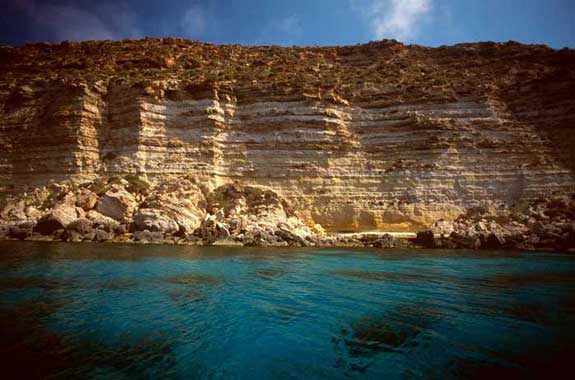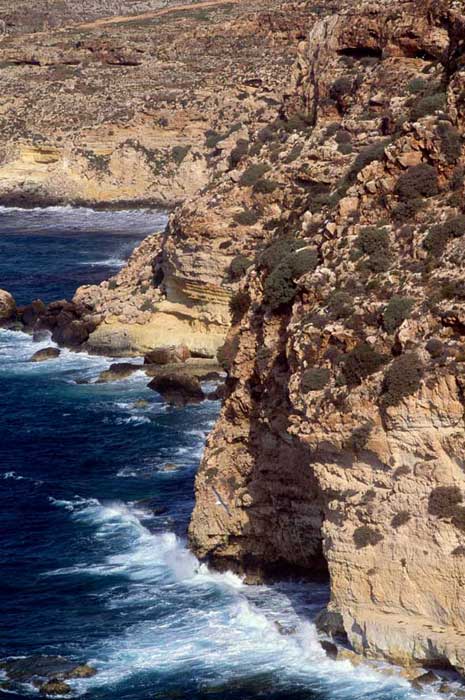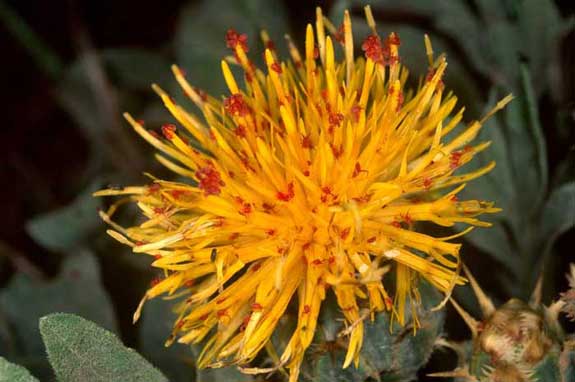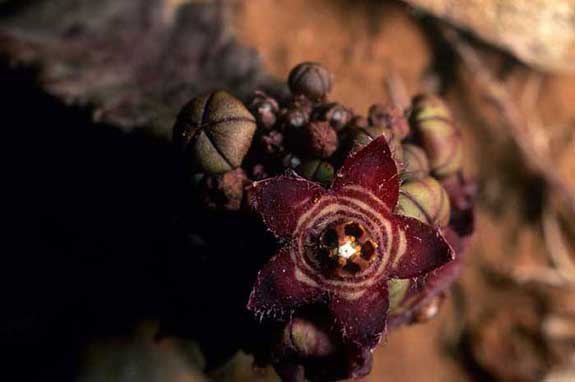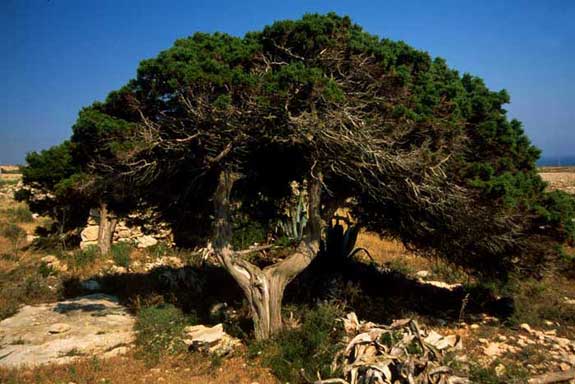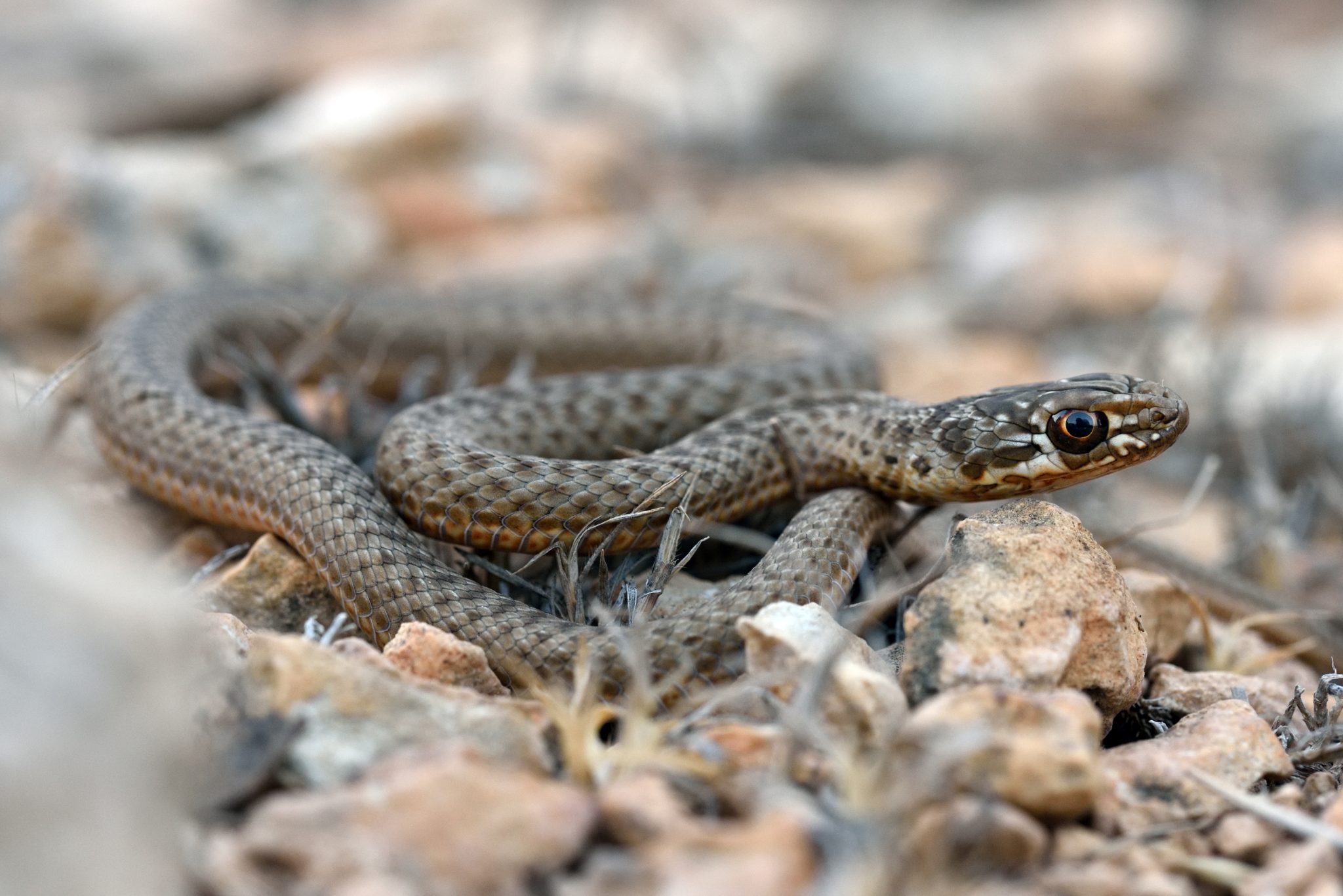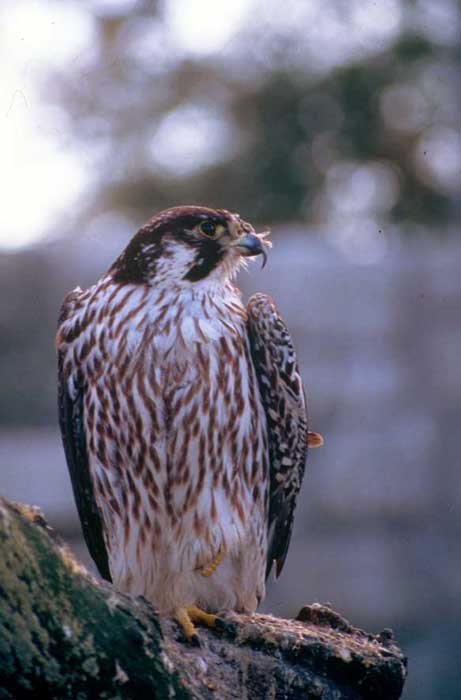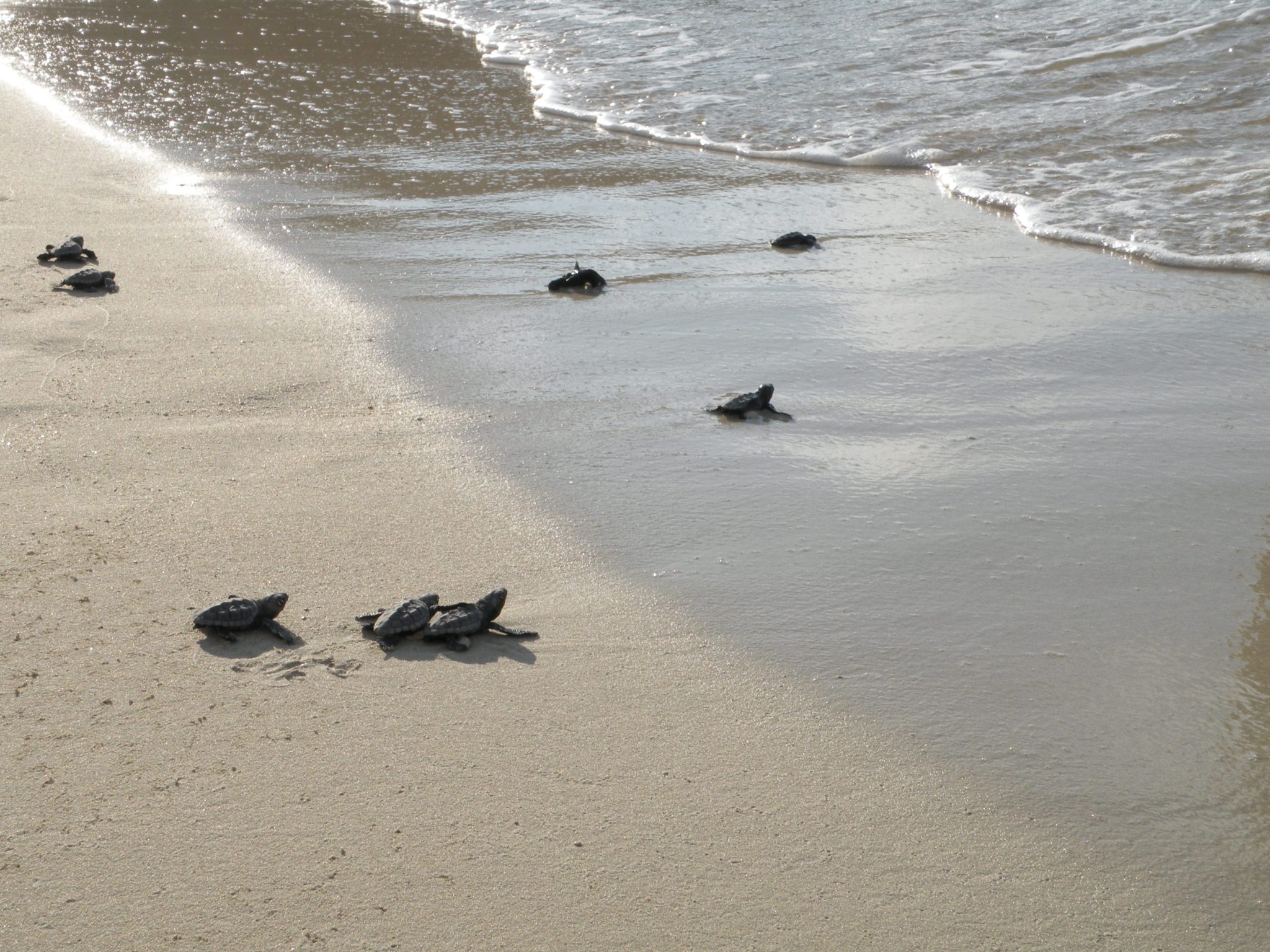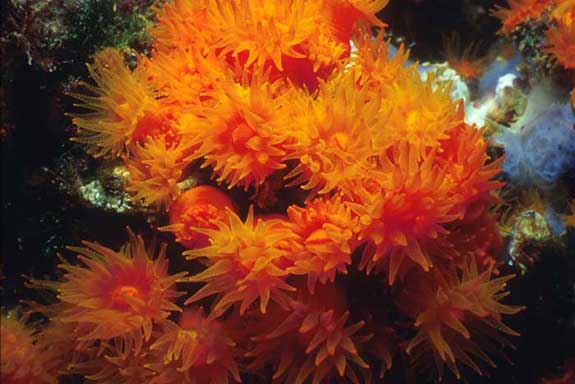Riserva Naturale
Isola di Lampedusa
In 1995, over an area of 367 Ha, the Nature Reserve “Island of Lampedusa” was established to protect the natural environment of the southern part of the island of Lampedusa included between the Vallone dell’Acqua (literally Water Valley) to the west, and Cala Greca to the east. In the protected area live some species of extraordinary naturalistic value. They are endemic to the island or highly restricted to this area, and often are endangered species; the Caretta caretta sea turtle lays its eggs in the splendid Baia dei Conigli (Rabbit Bay).
The territory of the reserve is divided in two areas depending on the environmental features and the different use purposes:
- Zone A of the Reserve includes: the large valleys that cut across the countryside down to the sea (Forbice, Dragutta, Tabaccara, Profondo, dell’Acqua, Terranova Valleys) and the overhanging uplands; the Conigli Island, and a small area, outside the coastal strip, where the Centaurea acaulis station is;
- Zone B includes the pre-reserve area that extends along the northern border of the protected area, and is delimited by the road that goes across the island.
R. N. Island of Lampedusa
Via V. Emanuele, 25
92031 Lampedusa (AG)
tel. 0922.971611
lampedusa@legambienteriserve.it
Riserva Lampedusa
Riserva Lampedusa
R.N. Isola di Lampedusa
Geology and Landscape
The island of Lampedusa lies in the central area of the Mediterranean Sea, much closer to Africa (which is 138 km away) than to Sicily (215 km away). It is the largest of the Pelagie Islands, with an area of about 20 square km, the shoreline 40 km long, and a maximum altitude of 133 m.
The natural heritage of Lampedusa, that geologically is part of the African continent, is deeply affected by its origins and structure. It looks like a flat rocky plateau, tilted towards the SE, without vegetation and heavily eroded by the action of wind and washouts, while the inland is similar to the desert areas of North Africa. This homogeneity is interrupted to the south by some deep river valleys which constitute the most important landscape features of the island from a geomorphological point of view and also because the most significant specimen of its natural heritage survive here. These are hollowed areas, from 400 m to 1,560 m long, that look like the African “wadis”, which move down to the sea forming beautiful sandy coves (the beaches of the Conigli Island, Cala Pulcino and Cala Galera), or suggestive suspended valleys.
On the northern and on part of the western coasts (in the stretch between Ponente Point and the Conigli Island) are impressive stratified cliffs with sheer drops or steep escarpments, while to the south (starting from Cala Galera) the coast slopes gently down towards the sea, forming bays, coves and inlets with a typical “rias” pattern. The entire coastline of the reserve has a great geological and landscape importance, for the intense erosion phenomena that have shaped the cliffs and determined the formation of marl platforms, caves, tunnels and caverns, as well as for the numerous and deep inlets with small sandy beaches.
Flora and vegetation
The vegetation landscape of Lampedusa has been heavily altered by man, as evidenced by the descriptions of the many naturalists who visited the island in the 1800s. They described the island as covered by a dense and varied Mediterranean shrub-land, growing as low bushes in the windiest areas and thriving in the most sheltered places. The complete destruction of the original vegetative cover was carried out by the Bourbons during the colonization of the island (1843), in order to use the land for agricultural purposes and give it to the colonists. Such an extensive deforestation has altered the delicate natural balances of the island as well as increased the meteoric erosive processes, leading in a short time to the disappearance of the soil and the surfacing of bare rocks. At present, Lampedusa is considered one of the most significant examples of how anthropogenic changes can damage an isolated environment. However, nowadays the Nature Reserve may be considered a real treasure box of precious rarities because of the such great variety of habitats and extraordinarily rich flora it preserves. The high scientific and conservation importance of the flora of Lampedusa lies above all in the high number of species endemic to the island, as well as of rare species that are the evidence of the connections the island has had with the African continent. There are also endangered species, in restricted areas and linked to habitats of community interest. In the protected area there are some species not found in the rest of Italy, such as Caralluma europaea (present only on the rocky ground of Lampedusa, on the coasts of northern Africa and in limited stations in southern Spain), and Centaurea acaulis (which grows spontaneously in North Africa).
There are various species exclusive to the islands of the Sicilian Channel or of the Central Mediterranean area, among which are Lagurus ovatus, Hypericum aegypticum and Euphorbia exigua. The number of rare species on the national and regional territory is truly remarkable, among these are the most precious elements of the island’s flora, such as the globe thistle (Echinops spinosus), the small-flowered cistus (Cistus parviflorus), Linaria reflexa, Limoniastrum monopetalum , pygmy Evax and the African wolfbane (Periploca angustifolia).
The species that grow exclusively on Lampedusa are 10: among which are Daucus lopadusanus, a small wild carrot widespread on coastal environments; Chiliadenus lopadusanus, which characterizes, with its fragrant bushes, the vegetation of the vast plains of the Reserve; Anthemis lopadusana, a small wild chamomile; Suaeda pelagica, which grows perched on the western cliffs of the protected area; Scilla dimartinoi, is a delightful bulbous plant, highly threatened because the small existing populations grow in highly vulnerable habitats.
The interesting orchids(Ophrys scolopax subsp. Scolopax, Ophrys ciliata, etc.), present in increasingly limited areas of the island are seriously endangered. While most of the trees and shrubs that were part of the original vegetation have become completely extinct. Some of them survive in very limited populations, such as carob and olive trees, relegated to shady areas at the bottom of the Terranova Valley; the Phoenician juniper, of which some splendid persisting individuals still grow, although crooked and bent by the wind. Some species are represented only by a few precious individual specimens, such as the strawberry tree, the myrtle, and the cistus.
The actual landscape of the Reserve is dominated by the garrigue vegetation, both in the most intact and mature forms (shrub land-garrigue), and in the poorest and most degraded ones (garrigue-steppe). Some rare plants of the Mediterranean shrub-land, characterized by tree spurge (Euphorbia dendroides) associated with wolfbane, lentisk, Teucrium fruticans, Prasium majus and juniper, survive only on the sides of the valleys within the Reserve. Along the coastal habitats, influenced by the proximity of the sea, the composition of the garrigue changes: here grow Euphorbia pinea, Thymelaea irsuta, Sedum sediforme and Sedum dasyphyllum. On the Conigli Island the vegetation is particularly abundant, enriched by splendid bushes of capers (Capparis spinosa) and Atriplex halimus. In the areas further away from the sea, the garrigue forms large and fragrant expanses of thyme (Coridothymus capitatus); while in flat areas, exposed to winds and disturbed by grazing, it is similar to the steppe vegetation, dominated by meadows of Scilla marina and asphodel. In spring and early summer, these grasslands are covered with the flowering of the morning glories, as well as with various annual herbaceous plants and colorful spiny asters (Pallenis spinosa, Carlina sicula, etc.). The coastal vegetation is very interesting: the stretch of land closer to the sea is characterized by the compact pulvini of the endemic Limonium lopadusanus, which produces delicate summer flowers, and by temporary small green areas that settle in between the cracks of the rocks where various endemic species grow, such as Diplotaxis scaposa, a small rocket with yellow flowers. These small meadows represent habitats of community interest, as well as the small seasonal ponds created by stagnant rainwater, where Elatine gussonei, considered one of the rarest plants of the Italian flora, thrives. On parts of the cliffs, where water drips, the Adiantum capillus-veneris grows, a further demonstration of the extraordinary richness and diversity of the Reserve’s flora.
Fauna
The complete isolation of Lampedusa took place after the last glaciation, as confirmed by the discovery of North African vertebrate fossils, so that it can be assumed that, 18,000 years ago, animals could walk across from the African continent to the island. This evident North African imprint gives the fauna of Lampedusa a high biogeographical importance. As the naturalist P. Calcara describes, in 1847, wild boars, cats, goats and deer lived there. The Mediterranean monk seals (Monachus monachus) gathered on the beaches at night and cranes regularly stopped on the island. At present, Mammals living here include: the wild rabbit, the domestic mouse, the black rat and the Etruscan shrew. Caves and natural cavities are home to bats, among which the common bent-wing bat (Miniopterus schreibersi) and the greater hornet (Myiotis myotis) are particularly important. The only amphibian present is the African green toad (Bufo boulengeri). Particularly important are the Reptiles, all originally from North Africa: the most common are the gecko and the eyed skink (Chalcides ocellatus), while the common striped lizard (Psammodromus algirus) is present only on the Conigli islet, the only place in Italy where this lizard lives. In the protected area find shelter also the hooded snake (Macroprotodon cucullatus), present in Italy only on Lampedusa, and the Montpellier snake (Malpolon monspessulanus insignitus), one of the largest European snakes. Field observation of the Hermann’s tortoise (Testudo hermanni hermanni), fairly common in the last century, is now difficult.
Foto: Matteo Di Nicola
Avifauna is also of great interest because it includes sedentary bird species that are very important from the conservation point of view. The Conigli Island is the territory of the yellow-legged gull, a population of about one hundred pairs lives and nests in this area. Kestrels nest on the crests of the valleys, while the cliffs overlooking the sea are ideal nesting sites for other bird species, such as Eleonora’s falcon, that every spring migrates from Madagascar to reproduce; the peregrine falcon, the European shag and the Mediterranean and Scopoli’s shearwaters. Due to its position as a bridge between Sicily and North Africa, Lampedusa is an important stopover site for many migratory birds crossing the Sicilian channel route. In spring the collared dove, the flycatcher, the sandpiper, the pipit, the garden and the melodious warblers, and many other migratory birds stop regularly in the protected area. The bright colors of the European bee-eater and roller stand out against the sky; moorhens choose quiet coves, flocks of night herons fly across the sky, while the harrier, the red-footed falcon, the osprey, the buzzard and the hobby search for their prey flying over the Reserve’s vast plains. Some herons and pink flamingoes can be often seen while resting for a couple of days after flying a long distance.
Nesting area of the sea turtle
The beach on the Conigli island is the nesting site of the Caretta caretta sea turtle, an endangered species that is under protection worldwide, because of the increasing urbanization of the coasts. In Italy, nesting usually takes place only along the Ionian shores of Calabria, Sicily and on the Pelagie islands, but there are more and more Italian regions that in recent years have hosted Caretta caretta nests (Sardinia, Basilicata, Campania, Tuscany, Puglia, Lazio and Abruzzo). The Conigli Beach is one of the Italian loggerhead sea turtle nesting sites that has been studied and monitored for the longest period. In the last 27 years sea turtles have been nesting here from 1 to 7 times a year.
On summer nights, between June and August, the sea turtle reaches the Conigli Beach and, after digging a hole, it lays about 100 eggs which are then covered up with sand. The incubation period is from 60 to 70 days; upon hatching, which generally occurs at night, the hatchlings emerge from the sand and immediately head towards the sea.
The breeding success of Caretta caretta is threatened by various natural and anthropogenic factors: predation by rats, gulls and stray dogs; crowded beaches and people bathing, coastal erosion and sea-storms. Even the erosion of beaches can produce negative effects on the nesting sites as they alter the granulometric peculiarities of the sand.
To ensure the maintenance of suitable environmental conditions, the managing body has implemented protection measures to avoid or reduce threat factors, minimize environmental impact, guarantee maximum quiet conditions at night: a protection service has been set up in order to give the beach back to Caretta caretta from sunset to sunrise. The Reserve staff monitors the nesting area, installs fences around the nests and supervises them during the entire incubation period. The Conigli Beach is constantly guarded in summer, with the support of several volunteers participating in the work camps organized by Legambiente. Moreover, an information and awareness point is active during the day at the entrance of the zone A of the Reserve, in order to obtain a respectful use compatible with the naturalistic importance of the places.
Marine habitat
The seabed and coastal habitats of the Pelagie Islands are among the most beautiful and interesting in the Mediterranean Sea because they are characterized by a high variety of structures and the abundance and diversity of the species present. The biogeographical importance of Lampedusa’s marine environment derives once again from its location in the Mediterranean Sea. This position has determined a mix of different faunas and the entry of some tropical species, such as the triggerfish and the Mediterranean parrotfish (Euscarus cretensis), typical of tropical coral reefs, and very common on the African coasts but hardly seen on the Italian ones.
The stretch of water in front of the Conigli Beach, included in zone A of the “Pelagie Islands” Marine Protected Area, is characterized by sandy and rocky sea-beds, comprising various habitats and species of community interest or endangered. Along the seashore there are the so called “trottoir”, typical platforms formed by Dendropoma petraeum shells cemented together by red calcareous algae. Meadows of Posidonia oceanica occupy the coastal area, that has an important ecological function and hosts a large number of plants and animals. The Astroides calycularis thrives just below the sea surface with several orange-red individuals tightly bonded to form a spectacular continuous strip. In addition, biocoenosis and very interesting species can be viewed, such as: the Cystoseira algal formations, the meadows of Cymodocea nodosa, the madreporaria Balanophillia europea and Clacodora caespitosa, the rare bivalve Pinna nobilis, the Caulerpa racemosa, an alga original from the Red Sea, and the Percnon gibbesi, a bright orange-red crab. One may have exciting encounters with the colorful fish present in the protected area, where 40 different species are easily observed, including sea breams, moray eels, amberjacks, as well as the brown grouper along the coastal strip of the Conigli island.
The Area
Traces of humankind on the island date back to prehistory, as supported by the remains of a Neolithic village and megalithic buildings. Also Phoenician, Carthaginian, Greek, Roman and Arab settlements are documented. Due to its geographical position, in ancient times the island had an important role as connecting point on trading and military routes, especially during the Punic wars and the Arab conquest of Sicily. Maybe it was uninhabited for long periods of time, for sure between the 1500s and 1700s. In 1436 Alfonso of Aragon gave the Pelagie islands to the Baron De Caro of Palma di Montechiaro and in the late 1600s the Tomasi family, heirs of the De Caro, obtained the title of princes of Lampedusa. However, they never visited that far away island, instead they tried to gain some profit by giving it to a family of Maltese farmers. In 1839 the Bourbon Ferdinand II bought the island as he was interested in extending his domain and acquiring an important outpost in the middle of the Mediterranean Sea. In 1843, he sent the frigate captain Bernardo Sanvisente to Lampedusa to set up an agricultural colony. The captain arrived on the island with 120 settlers which made severe transformations on the land: they destroyed the natural vegetation in order to plant crops, and started a charcoal burning activity that contributed to the destruction of the original maquis shrub-land that covered the island. Immediately after the unification of Italy, the Pelagie Islands became a penal colony, and in 1878 the Municipality was established.
The island hinterland shows the peculiarities of the ancient agricultural landscape: dry stone walls, made as field boundaries, and some “dammusi”, rural buildings made of stone according to the traditional typology, of which Case Teresa, near the Forbice Valley, are the most representative example. A walk through the village to the old port is a must. Strolling along Cala Palme, where the sea-life takes place and where the typical factories for processing and preserving fish are. Among the sites of greatest archaeological interest, that can be viewed only from outside, are: the fish salting factory in the Castello region, dating back to the Roman period; the storehouses from the prehistoric age at Capo Grecale and an underground necropolis in the center of town. Recently the Archaeological Museum of the Pelagie and the exhibition “Towards the Museum of Trust and Communication for the Mediterranean” have been inaugurated. The museum is a place where the past blends with the more recent history: on display are various archaeological finds and images of the natural beauties of the island, together with many belongings of the victims of the shipwreck of 3 October 2013 (photographs, letters, documents, personal effects), on exhibition are also several works of art from other well-known museums ( Uffizi, Bardo of Tunis, etc. …).

